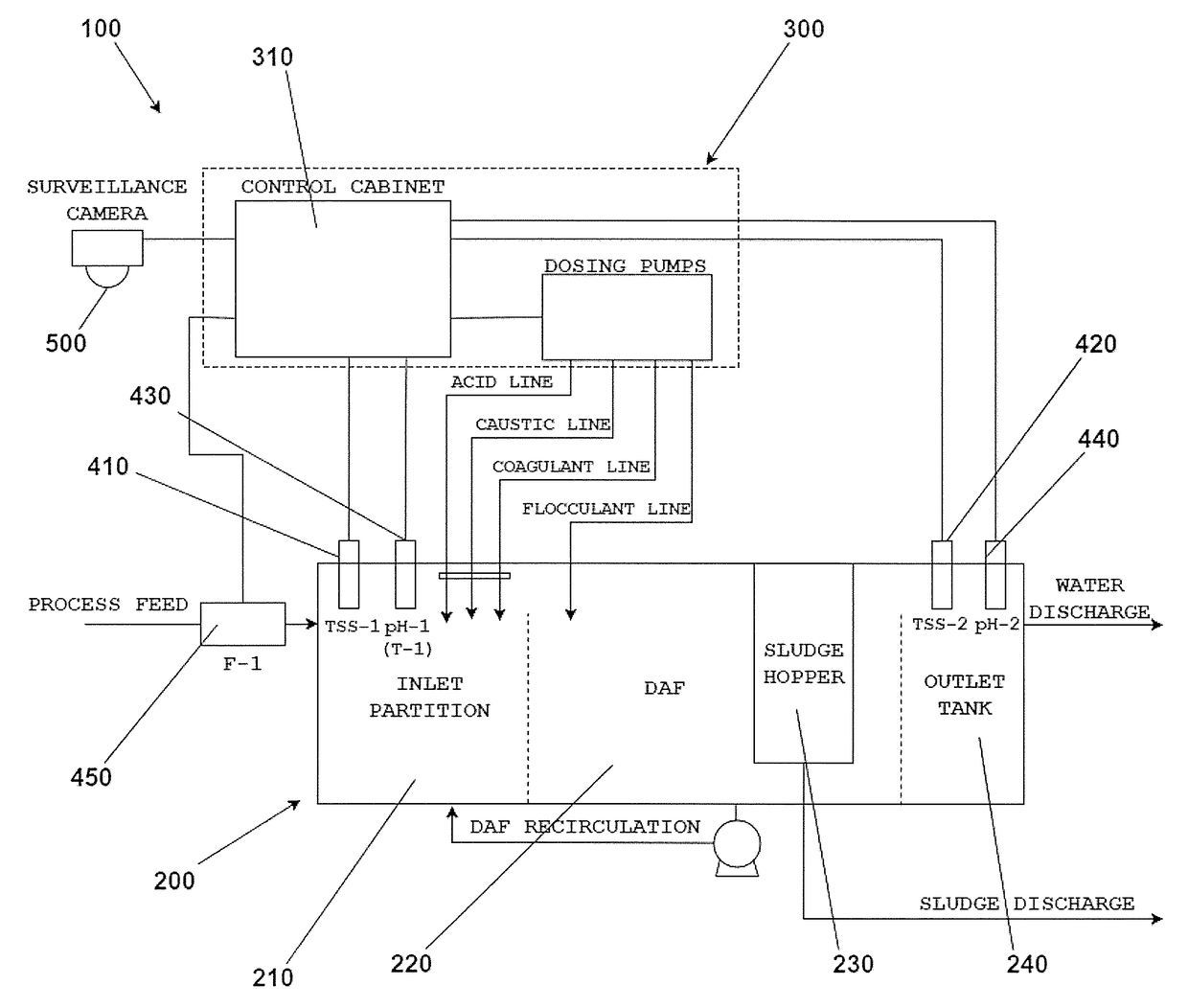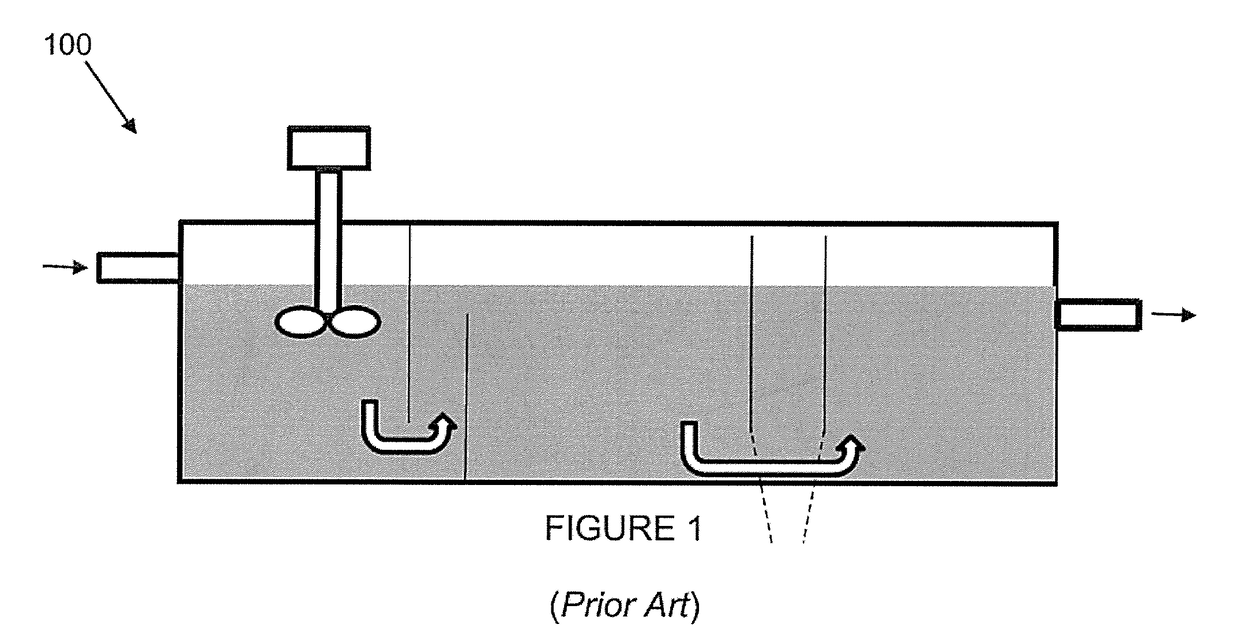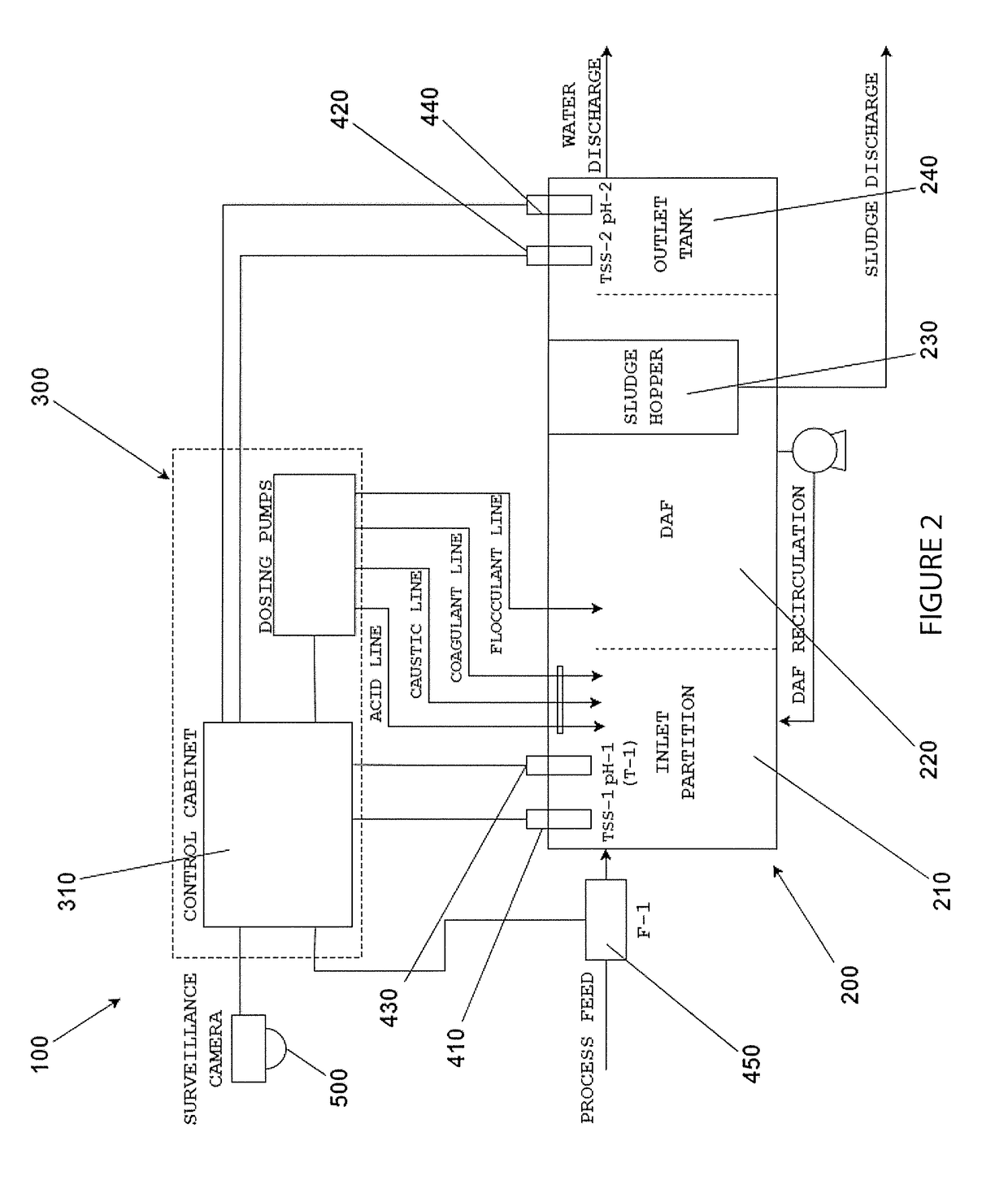Water treatment system and method
a technology for water treatment and water treatment, applied in the field of water treatment, can solve the problems of low innovation in design and operation, system existence for decades, and difficult treatment effectively, and achieve the effects of reducing discharge costs, reducing discharge costs, and reducing quality
- Summary
- Abstract
- Description
- Claims
- Application Information
AI Technical Summary
Benefits of technology
Problems solved by technology
Method used
Image
Examples
example 1
[0231]The present invention was tested on waste water generated at an abattoir. The waste water from the abattoir contained high levels of fats and proteins which contributed to a high level of TSS in the effluent. At the abattoir, this value, measured in parts per million (ppm), fluctuated constantly between 6,000 and 30,000 ppm, with the average value being approximately 10,000 ppm.
[0232]Discharging an effluent stream with a high TSS count can be very costly for a client as part of the discharge cost, as prescribed by the relevant water authorities, is directly proportional to the TSS concentration of the discharged effluent. As a result, the managers of the abattoir opted to treat their waste water to reduce the TSS levels prior to discharging it. Prior to testing the present invention, the managers of the abattoir used a manually operated DAF system to treat the effluent stream, with the chemistry determined by an operator through jar testing.
[0233]Prior to testing the present i...
PUM
 Login to View More
Login to View More Abstract
Description
Claims
Application Information
 Login to View More
Login to View More - R&D
- Intellectual Property
- Life Sciences
- Materials
- Tech Scout
- Unparalleled Data Quality
- Higher Quality Content
- 60% Fewer Hallucinations
Browse by: Latest US Patents, China's latest patents, Technical Efficacy Thesaurus, Application Domain, Technology Topic, Popular Technical Reports.
© 2025 PatSnap. All rights reserved.Legal|Privacy policy|Modern Slavery Act Transparency Statement|Sitemap|About US| Contact US: help@patsnap.com



